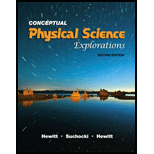
The order of inceasing boiling of the following compounds:
(a) Fluorine,
(b) Hydrogen fluoride,
(c) Hydrogen chloride,
Answer to Problem 2TC
The increasing order of boiling point is given as:
Explanation of Solution
A non-polar bond is formed by the sharing of negatively charged species (called electrons) between two same atoms having no electronegativity difference whereas a polar bond is formed by the sharing of negatively charged species (electrons) between two different atoms having a slight electronegativity difference between them. In a polar bond, the atom with slightly higher electronegativity gains a negative charge while the atom with slightly lower electronegativity gains a positive charge.
The boiling point of a molecule depends on the nature of a bond as well on the type of intermolecular force of attraction. A non-polar molecule has a lower boiling point due to no extra intermolecular forces whereas a polar molecule shows a higher value of boiling point because of extra intermolecular forces.
Among the given molecules,
Thus, considering all the consequences the increasing order of boiling point is given as:
Conclusion:
Therefore, the increasing order of boiling point is given as:
Chapter 18 Solutions
Conceptual Physical Science Explorations
Additional Science Textbook Solutions
Sears And Zemansky's University Physics With Modern Physics
Physics for Scientists and Engineers: A Strategic Approach, Vol. 1 (Chs 1-21) (4th Edition)
University Physics Volume 1
Cosmic Perspective Fundamentals
Conceptual Integrated Science
The Cosmic Perspective (8th Edition)
 College PhysicsPhysicsISBN:9781305952300Author:Raymond A. Serway, Chris VuillePublisher:Cengage Learning
College PhysicsPhysicsISBN:9781305952300Author:Raymond A. Serway, Chris VuillePublisher:Cengage Learning University Physics (14th Edition)PhysicsISBN:9780133969290Author:Hugh D. Young, Roger A. FreedmanPublisher:PEARSON
University Physics (14th Edition)PhysicsISBN:9780133969290Author:Hugh D. Young, Roger A. FreedmanPublisher:PEARSON Introduction To Quantum MechanicsPhysicsISBN:9781107189638Author:Griffiths, David J., Schroeter, Darrell F.Publisher:Cambridge University Press
Introduction To Quantum MechanicsPhysicsISBN:9781107189638Author:Griffiths, David J., Schroeter, Darrell F.Publisher:Cambridge University Press Physics for Scientists and EngineersPhysicsISBN:9781337553278Author:Raymond A. Serway, John W. JewettPublisher:Cengage Learning
Physics for Scientists and EngineersPhysicsISBN:9781337553278Author:Raymond A. Serway, John W. JewettPublisher:Cengage Learning Lecture- Tutorials for Introductory AstronomyPhysicsISBN:9780321820464Author:Edward E. Prather, Tim P. Slater, Jeff P. Adams, Gina BrissendenPublisher:Addison-Wesley
Lecture- Tutorials for Introductory AstronomyPhysicsISBN:9780321820464Author:Edward E. Prather, Tim P. Slater, Jeff P. Adams, Gina BrissendenPublisher:Addison-Wesley College Physics: A Strategic Approach (4th Editio...PhysicsISBN:9780134609034Author:Randall D. Knight (Professor Emeritus), Brian Jones, Stuart FieldPublisher:PEARSON
College Physics: A Strategic Approach (4th Editio...PhysicsISBN:9780134609034Author:Randall D. Knight (Professor Emeritus), Brian Jones, Stuart FieldPublisher:PEARSON





